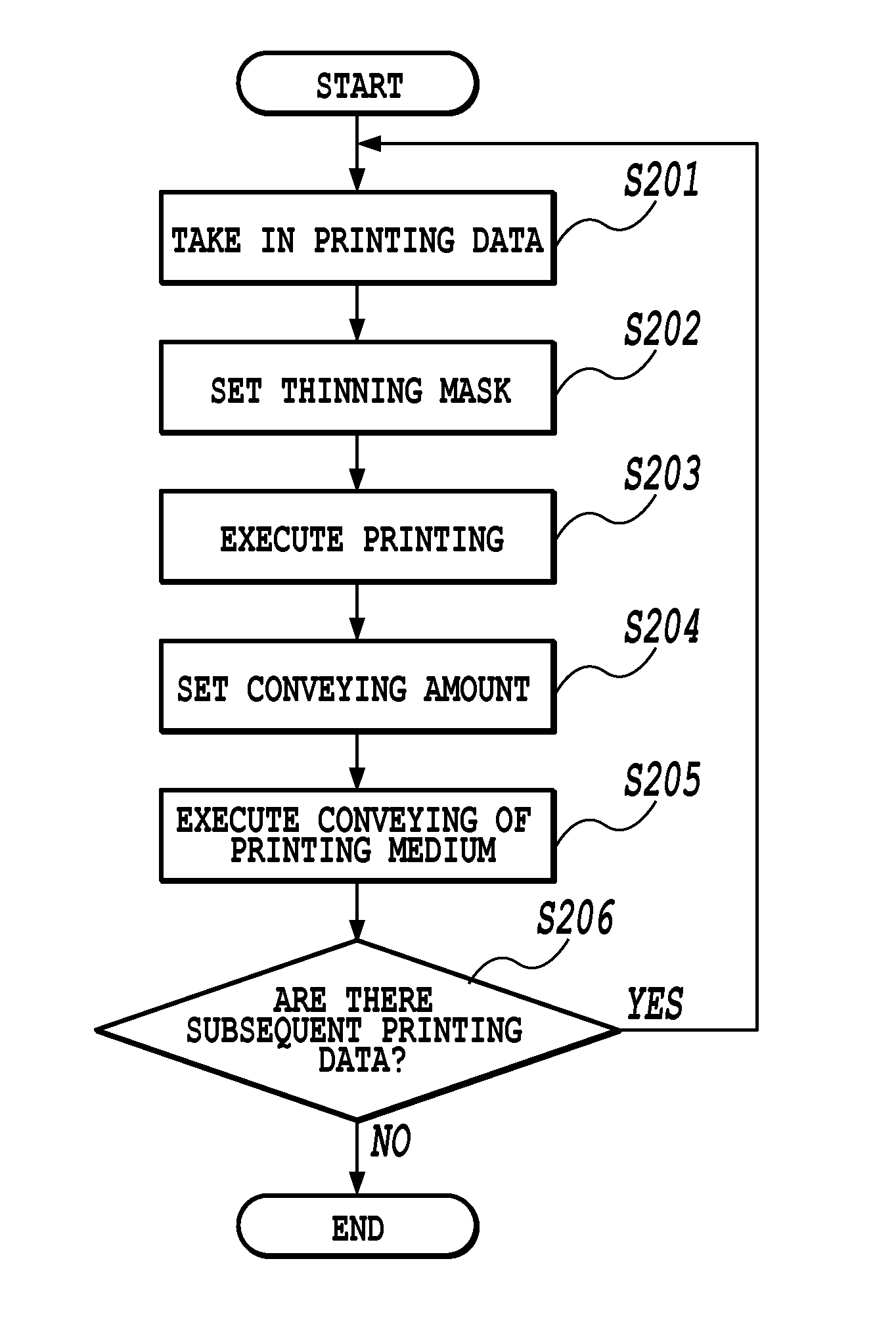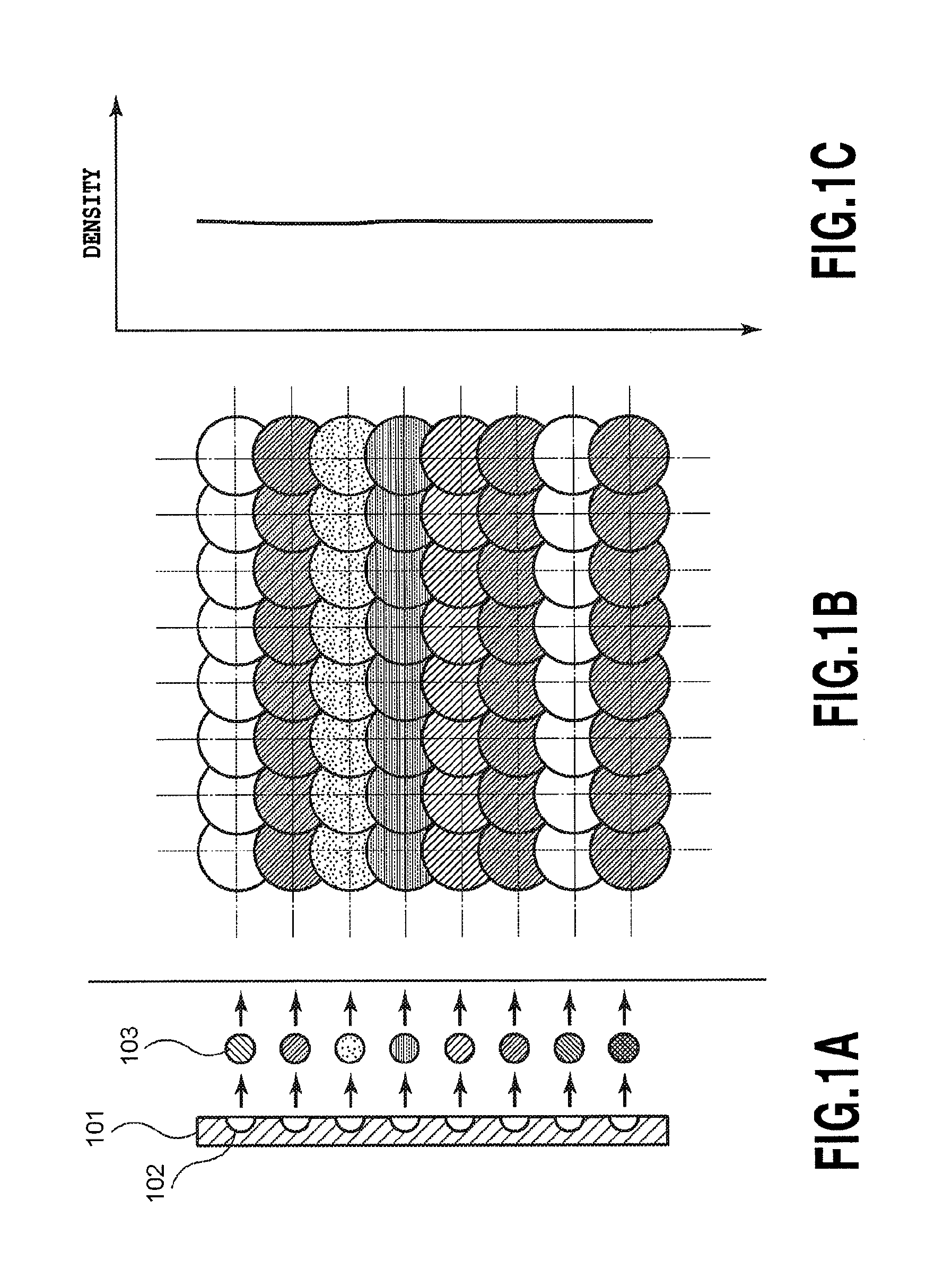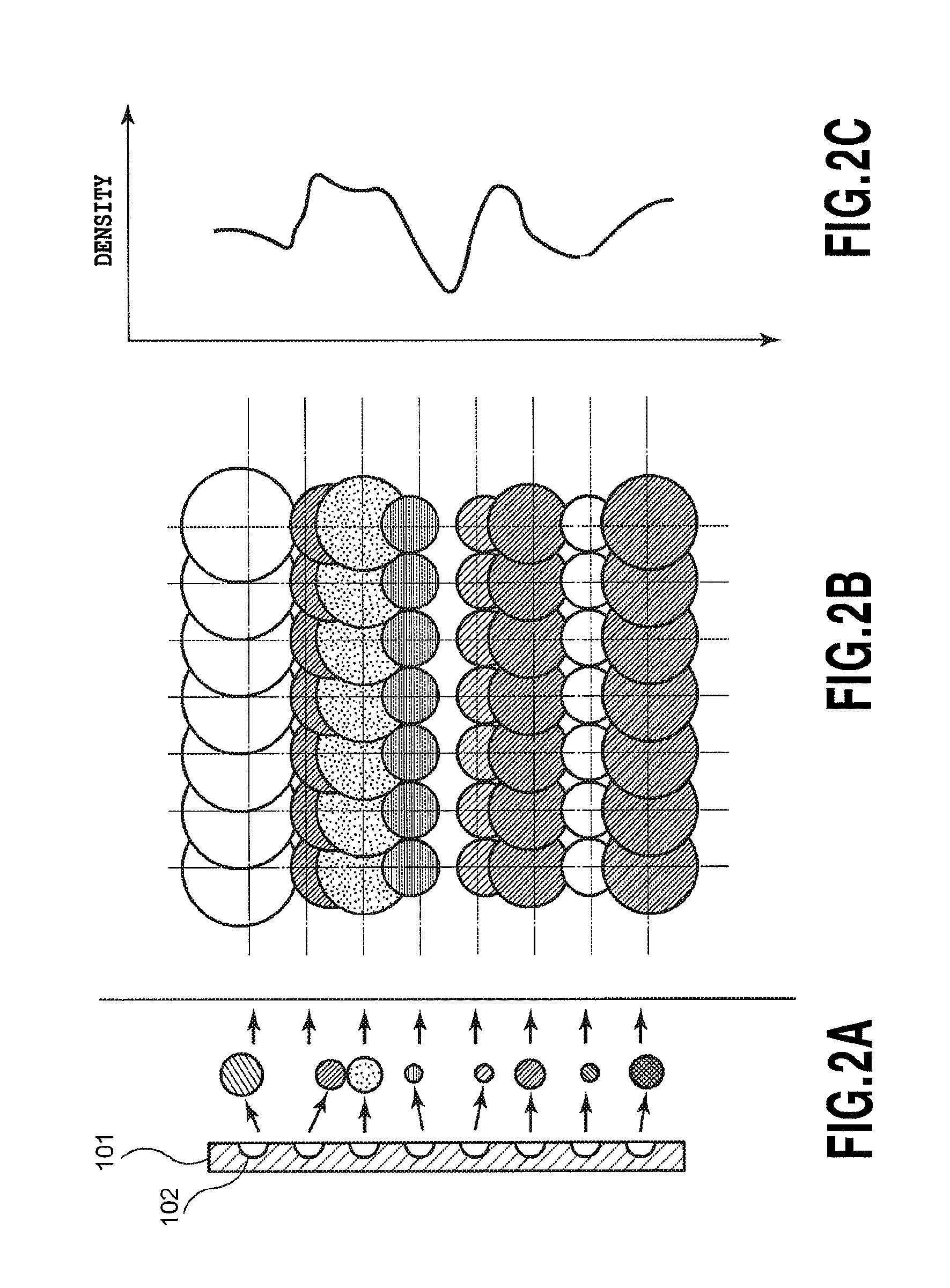Inkjet printing apparatus and inkjet printing method
a technology of inkjet printing and printing apparatus, which is applied in the direction of printing mechanism, spacing mechanism, printing, etc., can solve the problems of density unevenness (time interval unevenness), low printing efficiency, and low printing efficiency, and achieve the effect of density unevenness
- Summary
- Abstract
- Description
- Claims
- Application Information
AI Technical Summary
Benefits of technology
Problems solved by technology
Method used
Image
Examples
first embodiment
Multi-Scan Printing Method with Control of Printing Time Interval Difference
FIG. 12 is a diagram showing an example of multi-scan printing with bidirectional scanning according to an embodiment of the present invention. A multi-scan method described below can reduce mutual differences in density (between-band unevenness) between unit areas, for each of which printing is completed in a plurality of scans.
The figure shows an example where a print head having 16 nozzle blocks is used to complete printing of a unit area in two scans of forward and backward scans. In the present embodiment, one nozzle block is constituted of 16 nozzles. In the printing of the present embodiment, a conveying control, which differs from that of conventional multi-scan printing in a conveying amount of printing medium conveying performed in an interval between scans, is performed. Specifically, as shown in FIG. 12, with the present embodiment, after a first printing scan in a forward direction, conveying of...
second embodiment
According to a second embodiment of the present invention, a process of suppressing density variations due to printing time interval differences according to position in a scan direction, in both the multi-scan printing method with control of printing time interval difference, described in FIG. 15, and the normal multi-scan printing method is performed in accordance with the switching between the above two methods. Specifically, an ink applying amount that is indicated by printing data is varied in accordance with predicted density variation.
FIG. 19 is a diagram showing a density variation along the scan direction in a unit area of a printing result by the multi-scan printing method with control of printing time interval difference shown in FIG. 12.
In FIG. 19, an abscissa denotes the position in the scan direction and an ordinate denotes the density. Here, the density is an optical reflection density of an image printed on a printing medium and is a result of measuring the density o...
PUM
 Login to View More
Login to View More Abstract
Description
Claims
Application Information
 Login to View More
Login to View More - R&D
- Intellectual Property
- Life Sciences
- Materials
- Tech Scout
- Unparalleled Data Quality
- Higher Quality Content
- 60% Fewer Hallucinations
Browse by: Latest US Patents, China's latest patents, Technical Efficacy Thesaurus, Application Domain, Technology Topic, Popular Technical Reports.
© 2025 PatSnap. All rights reserved.Legal|Privacy policy|Modern Slavery Act Transparency Statement|Sitemap|About US| Contact US: help@patsnap.com



